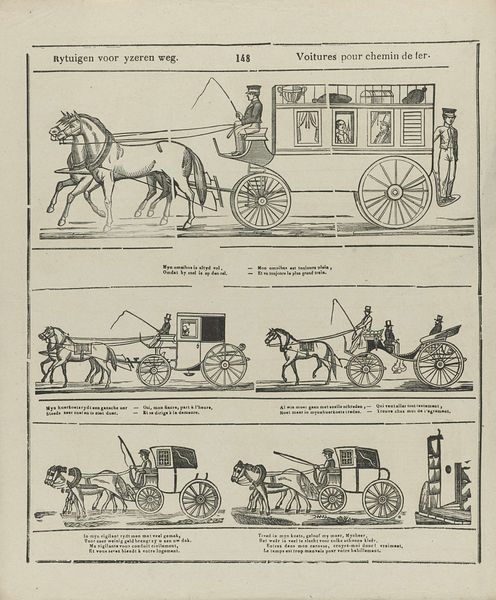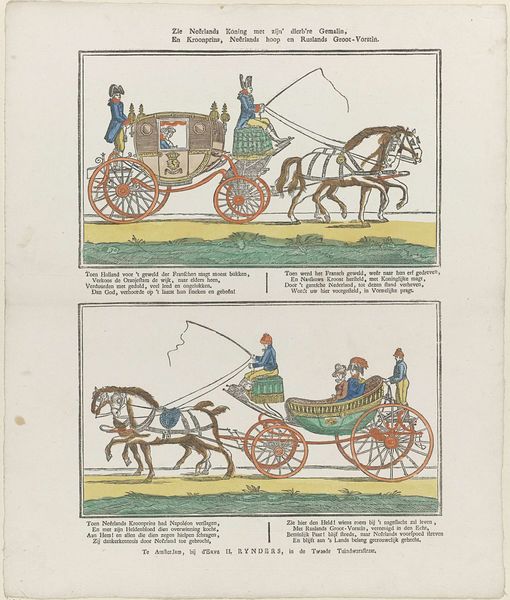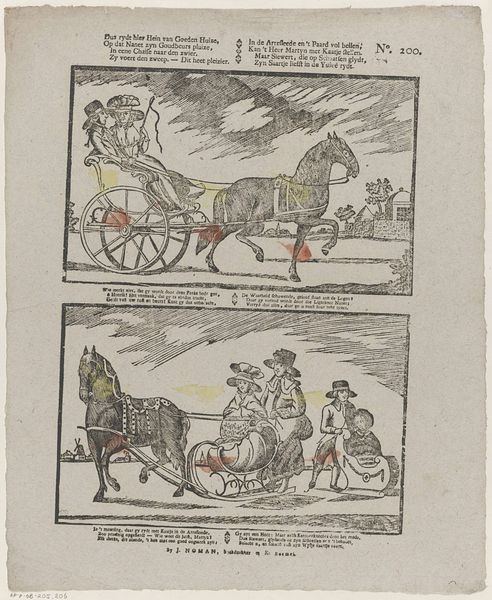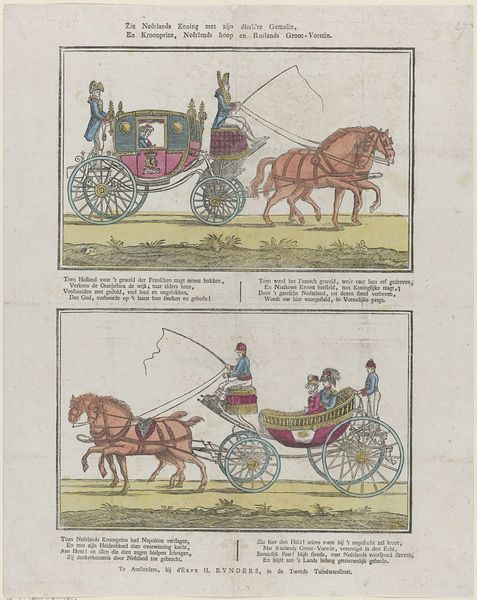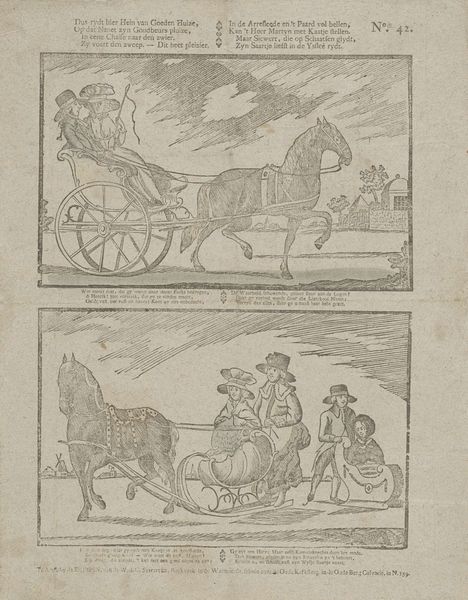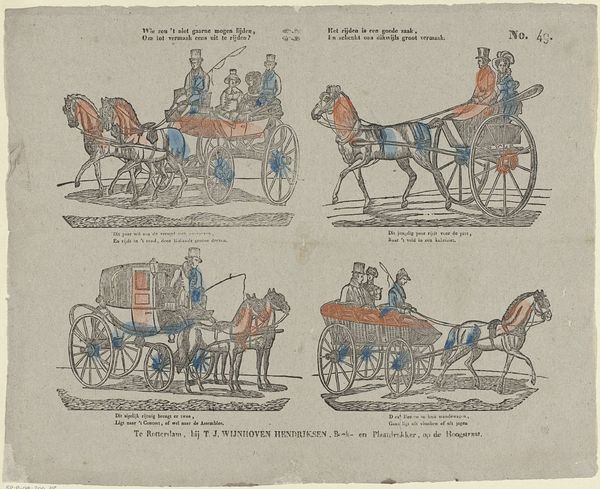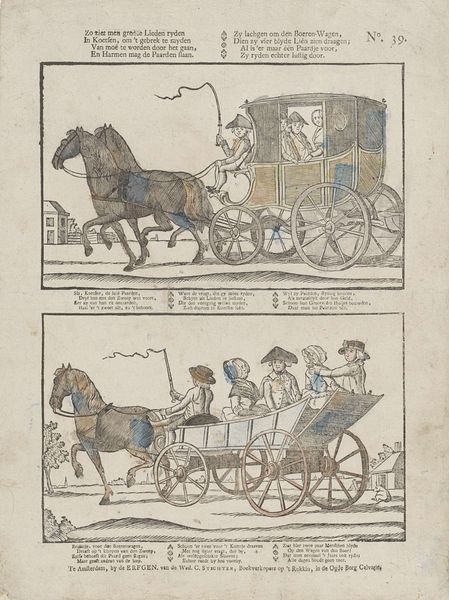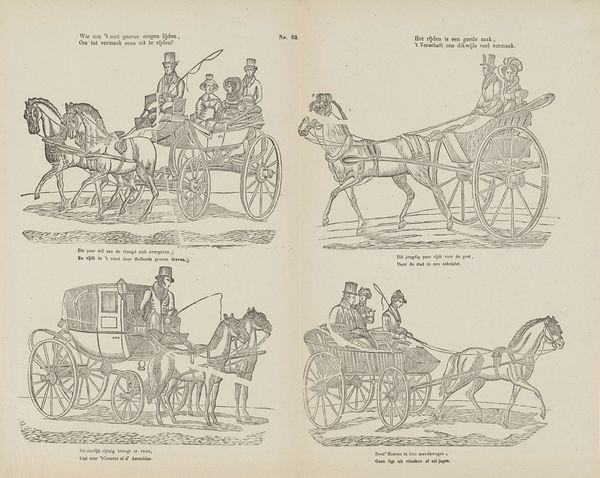
drawing, graphic-art, print, paper, ink, engraving
#
drawing
#
graphic-art
#
narrative-art
#
dutch-golden-age
# print
#
pen sketch
#
old engraving style
#
paper
#
ink
#
genre-painting
#
history-painting
#
engraving
Dimensions: height 420 mm, width 314 mm
Copyright: Rijks Museum: Open Domain
Curator: Looking at "De verkeerde nieuwe waereld," or "The Wrong New World," created between 1761 and 1804 by Erven de Weduwe Jacobus van Egmont, my first thought is... it feels like an awkward dance. Stiff and slightly judgmental, don't you think? Editor: Absolutely. The medium itself, an engraving in ink on paper, lends to that sense of formal constraint, which feels so typical of Dutch Golden Age satirical prints. The division of the image into clear upper and lower registers also signals a deliberate didactic message about social behaviors, hierarchies and perhaps moral inversions in the 18th Century Dutch society. Curator: The narrative here is fascinating. Two scenes, each with horse-drawn carriages, but flipped. Up top, we have what I assume is a more natural order. And below? The coachman rides *inside* with passengers perched atop! I almost get a feeling of rebellion here... Editor: I'd say, it’s less rebellion and more commentary. "The Wrong New World" likely speaks to societal inversions and inappropriate social conduct; an example about how authority figures like coachmen, often from working classes, and perhaps even gender roles get improperly elevated or positioned, disrupting social harmony. Notice how text accompanying each vignette elaborates these perceived "wrongs." The inclusion of class dynamics here can not be ignored. Curator: I see it. I guess I was projecting a bit of my own anarchic tendencies! But, the figures do seem intentionally out of place, like a twisted stage play. I also wonder who this print was marketed to and consumed by. Editor: This engraving probably circulated among the educated merchant classes and even those among the aristocracy interested in witty commentary of Dutch society. These prints weren't mere decoration but rather tools for shaping public opinion and negotiating cultural values, offering commentary in morality tales like what you'd find in the emblems or even folklore. They tell stories. Curator: Stories indeed. So, a complex little rectangle, packed with commentary and a touch of humor. Editor: Yes, and while this engraving is small, its insights into power, propriety, and perception resonate far beyond its dimensions.
Comments
No comments
Be the first to comment and join the conversation on the ultimate creative platform.




